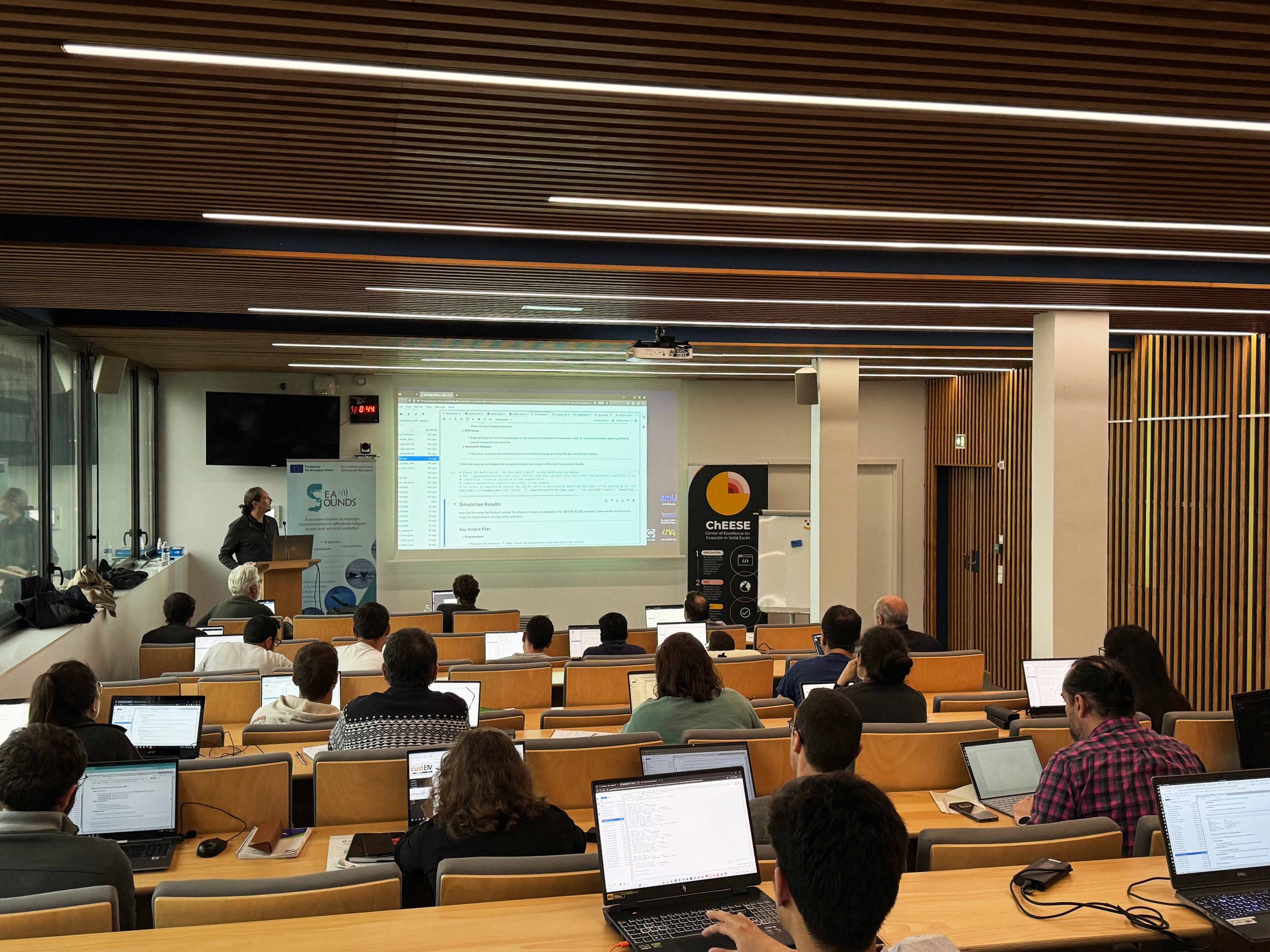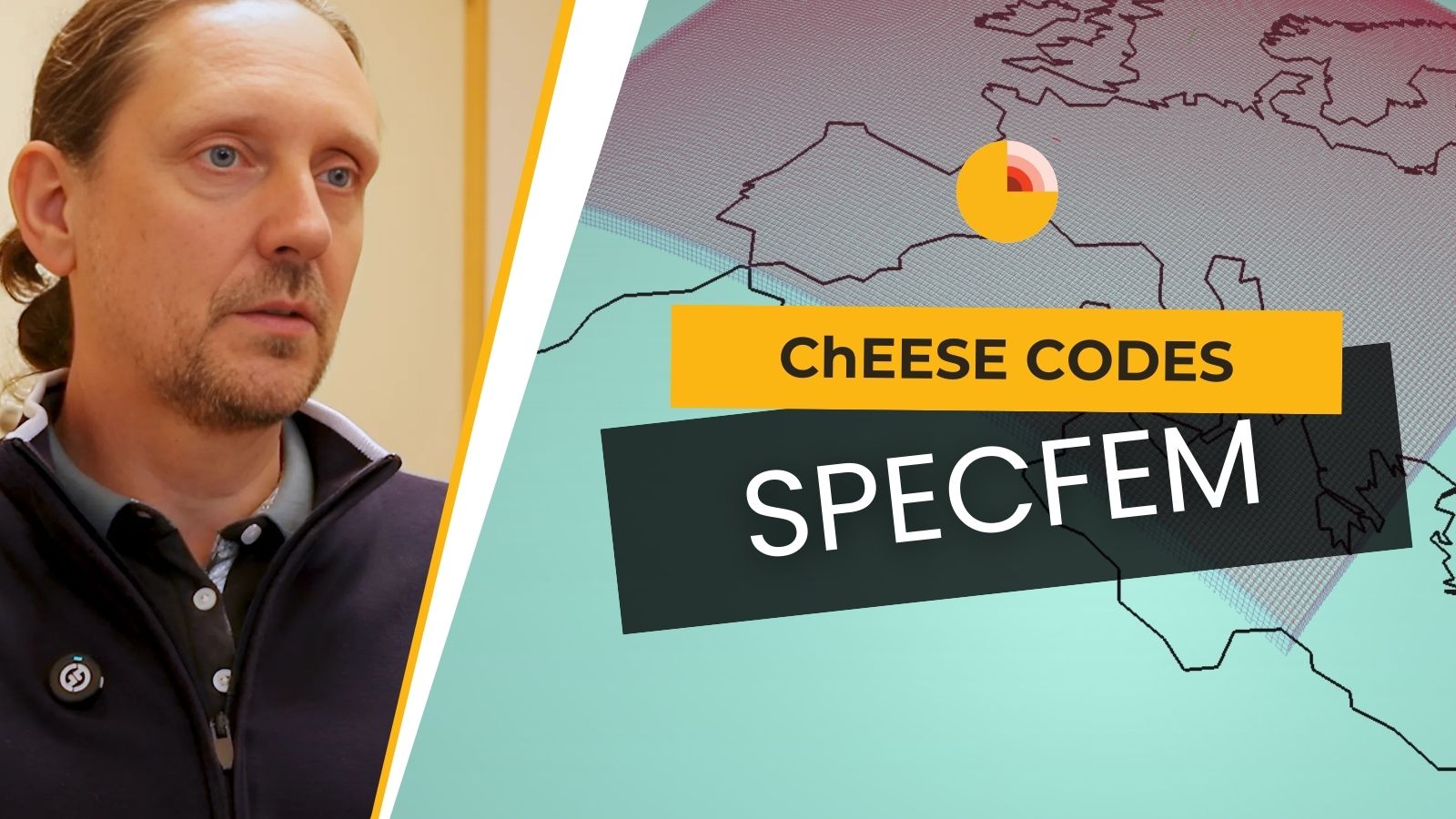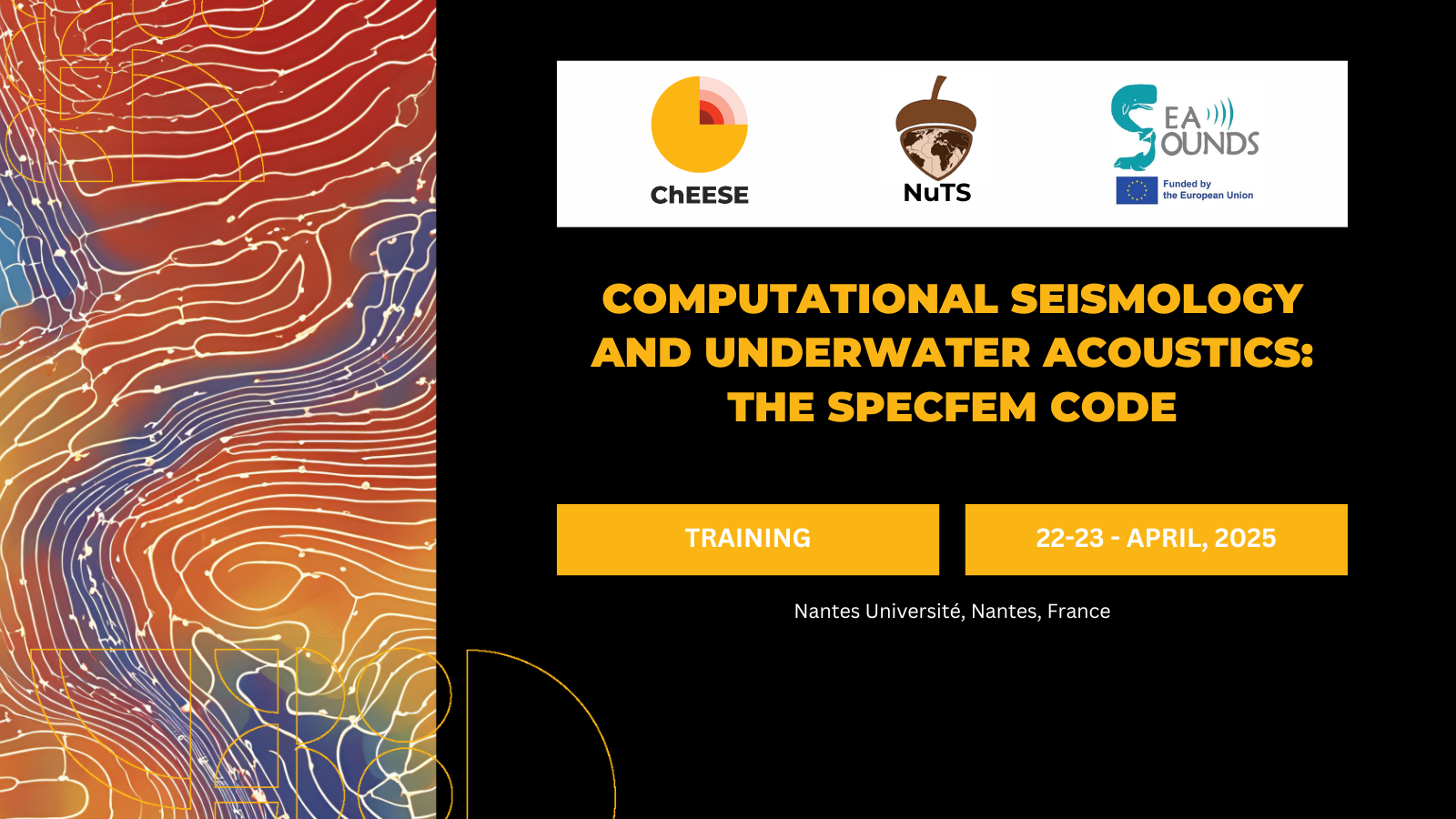SPECFEM
SPECFEM is a suite of simulation open-source codes designed to model how seismic waves travel through the Earth. It includes versions such as: SPECFEM3D and SPECFEM C++, each tailored for specific use cases.
Using the spectral-element method, these codes accurately capture complex geological features like mountains, basins, and underground faults.
Scientists rely on SPECFEM to create detailed maps of shaking intensity, improving earthquake preparedness and hazard assessment. It is also used in fields like volcanology, subsurface imaging, and even medical ultrasound testing.
Seismoacoustic wave model of an underwater explosion detonated by the French Navy in the Rade d’Hyères, southern France.
Classical benchmark model “Marmousi”, featuring multiple geological layers. It illustrates the interaction between seismic waves and complex subsurface structures over time.
Representation of the diffracted acoustic waves by a sea mount, a large submarine landform that rises from the ocean floor without reaching the water surface.
SPECFEM3D in Scopus: Documents by year
No Data Found
By Subject
No Data Found
By Country
No Data Found
Analysis of the results from the bibliographic search on SPECFEM3D. Scopus. (2025, March)
SPECFEM In Video
Milestones
A short timeline of major SPECFEM achievements from the official code website.





